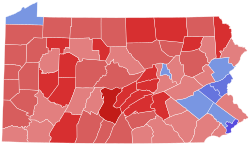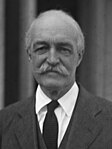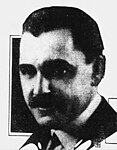
The 1928 United States presidential election was the 36th quadrennial presidential election, held on Tuesday, November 6, 1928. Republican former Secretary of Commerce Herbert Hoover defeated the Democratic nominee, Governor Al Smith of New York. After President Calvin Coolidge declined to seek reelection, Hoover emerged as his party's frontrunner. As Hoover's party opponents failed to unite around a candidate, Hoover received a large majority of the vote at the 1928 Republican National Convention. The strong state of the economy discouraged some Democrats from running, and Smith was nominated on the first ballot of the 1928 Democratic National Convention. Hoover and Smith had been widely known as potential presidential candidates long before the 1928 campaign, and both were generally regarded as outstanding leaders. Both were newcomers to the presidential race and presented in their person and record an appeal of unknown potency to the electorate. Both faced serious discontent within their respective parties' membership, and both lacked the wholehearted support of their parties' organization.

Gifford Pinchot was an American forester and politician. He served as the fourth chief of the U.S. Division of Forestry, as the first head of the United States Forest Service, and as the 28th governor of Pennsylvania. He was a member of the Republican Party for most of his life, though he joined the Progressive Party for a brief period.

William Scott Vare was an American politician from Pennsylvania who served as a Republican member of the United States House of Representatives for Pennsylvania's 1st congressional district from 1912 to 1927. He also served as a member of the Pennsylvania State Senate from the 1st Senatorial District from 1922 to 1923. He won election to the United States Senate for Pennsylvania in 1926 but was never seated and was eventually removed in 1929 due to allegations of corruption and voter fraud.

George Wharton Pepper was an American lawyer, law professor at the University of Pennsylvania Law School, Christian activist, and Republican politician from Philadelphia, Pennsylvania. He represented Pennsylvania in the United States Senate, and founded the law firm of Pepper Hamilton.
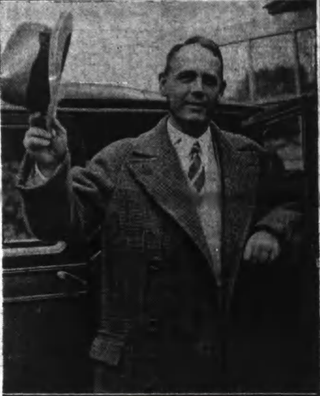
The 1930 New York state election was held on November 4, 1930, to elect the governor, the lieutenant governor, the state comptroller, the attorney general and a judge of the New York Court of Appeals, as well as all members of the New York State Assembly and the New York State Senate.

The 1994 Pennsylvania gubernatorial election was held on November 8, 1994. The incumbent governor, Bob Casey, Sr. (Democrat), was barred from seeking a third term by the state constitution. The Republican Party nominated Congressman Tom Ridge, while the Democrats nominated Mark Singel, Casey's lieutenant governor. Ridge went on to win the race with 45% of the vote. Singel finished with 39%, and Constitution Party candidate Peg Luksik finished third, garnering 12% of the vote.

The 1898 Pennsylvania gubernatorial election was held on November 8, 1898. It featured a three-way campaign between major party candidates William Stone and George Jenks, as well as a strong showing by prohibitionist Silas Swallow.

The 1914 United States Senate election in Pennsylvania was held on November 3, 1914. Incumbent Republican U.S. Senator Boies Penrose won re-election against Gifford Pinchot and A. Mitchell Palmer.

The United States Senate election of 1930 in Massachusetts was held on November 4, 1930. Incumbent Republican Senator Frederick H. Gillett did not run for re-election. In the open race to succeed him, Democratic Mayor of Fitchburg Marcus A. Coolidge defeated former U.S. Senator William M. Butler.

Samuel Davis Wilson was an American politician; he served as the 86th Mayor of Philadelphia from 1936 until his death in 1939.
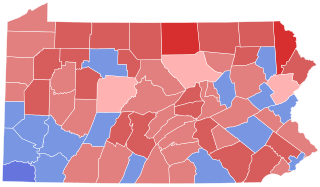
The 1950 Pennsylvania gubernatorial election was held on November 7. For the twenty-second time in twenty-five elections, the Republican candidate was victorious, but by a much smaller than usual margin. Superior Court Judge John S. Fine defeated Democrat Richardson Dilworth, the City Controller of Philadelphia. This election marked the last time until 2022 that a political party would win three consecutive gubernatorial elections in Pennsylvania.

Harry Arista Mackey was an American college football player and coach, lawyer, and politician. He served as the mayor of Philadelphia from 1928 to 1932.

The 1926 United States Senate election in Pennsylvania was held on November 2, 1926. Incumbent Republican George W. Pepper, who was appointed following the death of Boies Penrose, was defeated for re-nomination by William Scott Vare. Vare won the election, defeating Democratic opponent William Bauchop Wilson. He was not permitted to assume office, however, until an investigation was conducted into possible election fraud and corruption. Vare was ultimately unseated in December 1929 by the Senate, following charges of corruption.

The 1926 Pennsylvania gubernatorial election occurred on November 2, 1926. Incumbent Republican governor Gifford Pinchot was not a candidate for re-election. Republican candidate John Fisher defeated Democratic candidate Eugene C. Bonniwell to become Governor of Pennsylvania. Edward E. Beidleman, Thomas Wharton Phillips Jr., and John K. Tener unsuccessfully sought the Republican nomination.

The 1934 Pennsylvania gubernatorial election occurred on November 6, 1934. Incumbent Republican governor Gifford Pinchot was not a candidate for re-election.

Francis Shunk Brown was an American lawyer from Pennsylvania who served one term as Pennsylvania Attorney General from 1915 to 1919 and ran unsuccessfully in the Republican primary for Governor in 1930.

The 1925 New Jersey gubernatorial election was held on November 3, 1925. Democratic Jersey City Commissioner A. Harry Moore defeated Republican State Senator Arthur Whitney with 51.87% of the vote.
